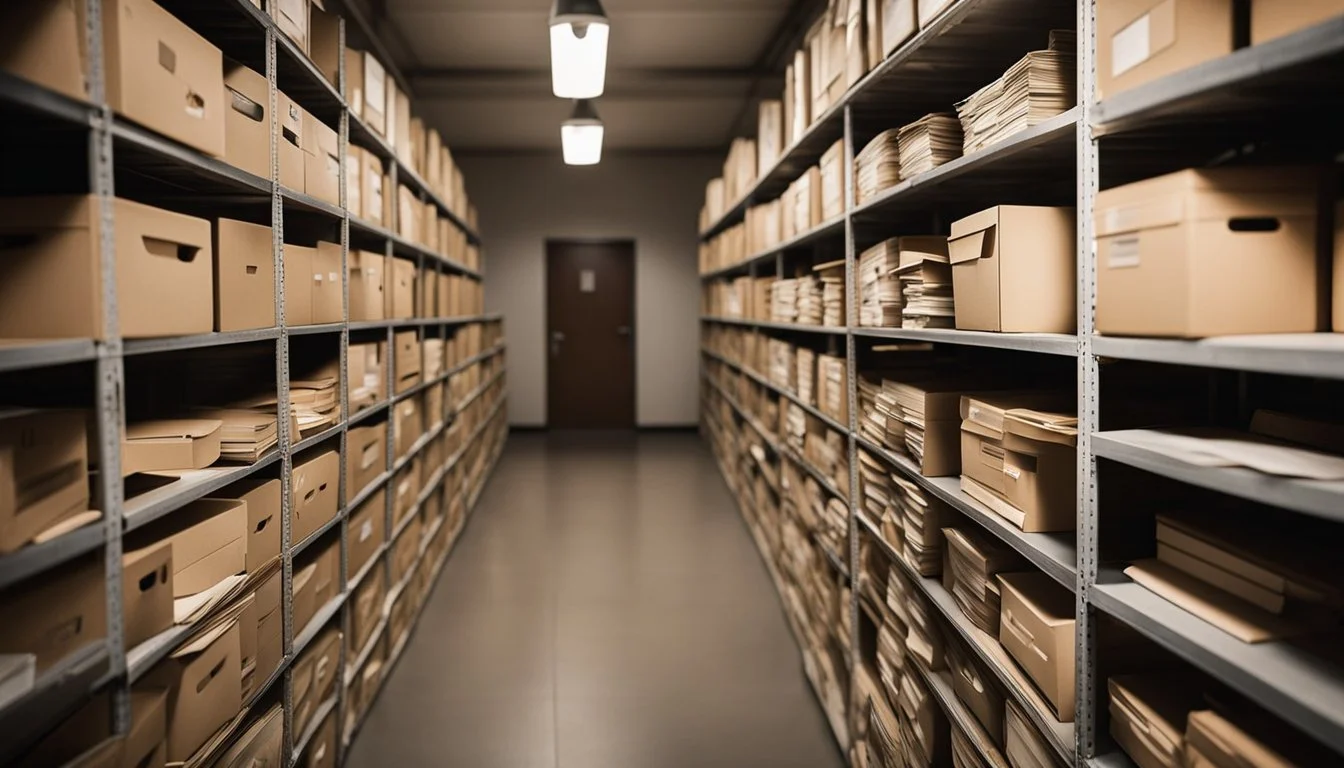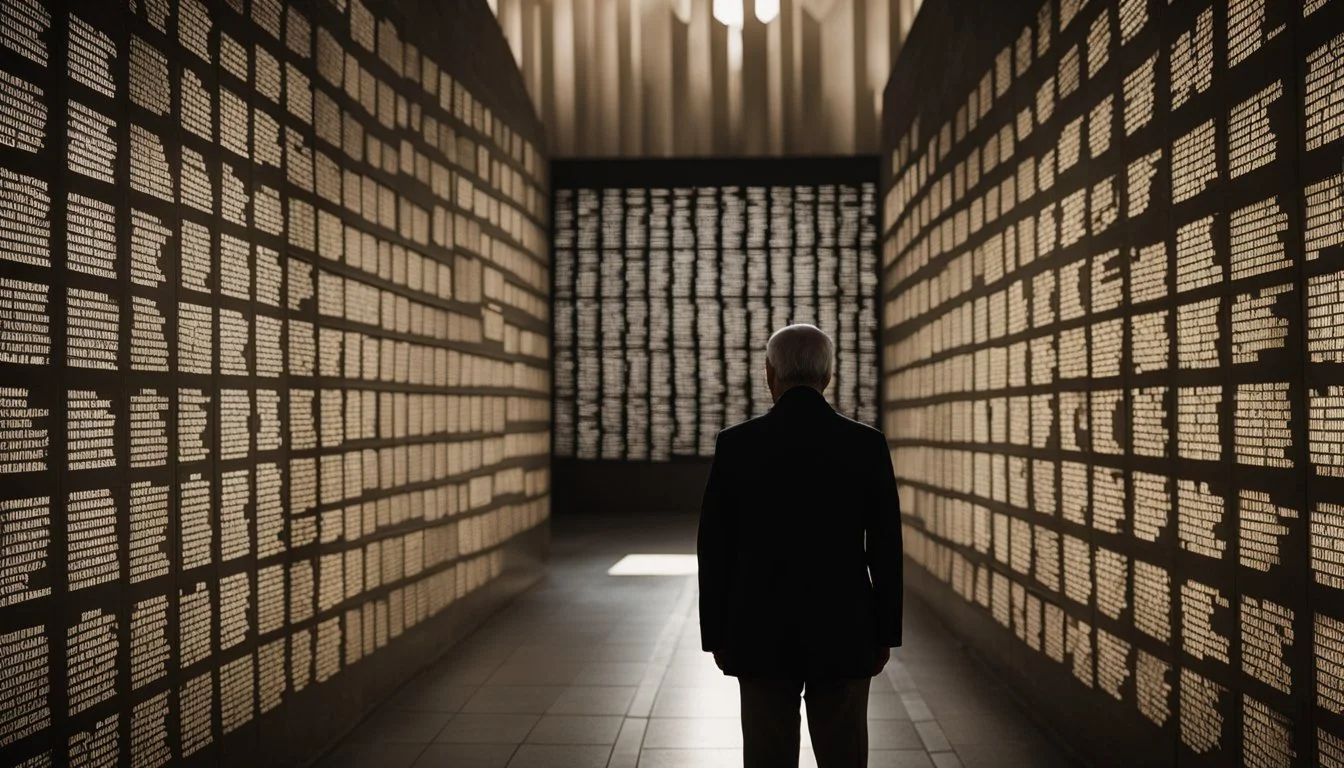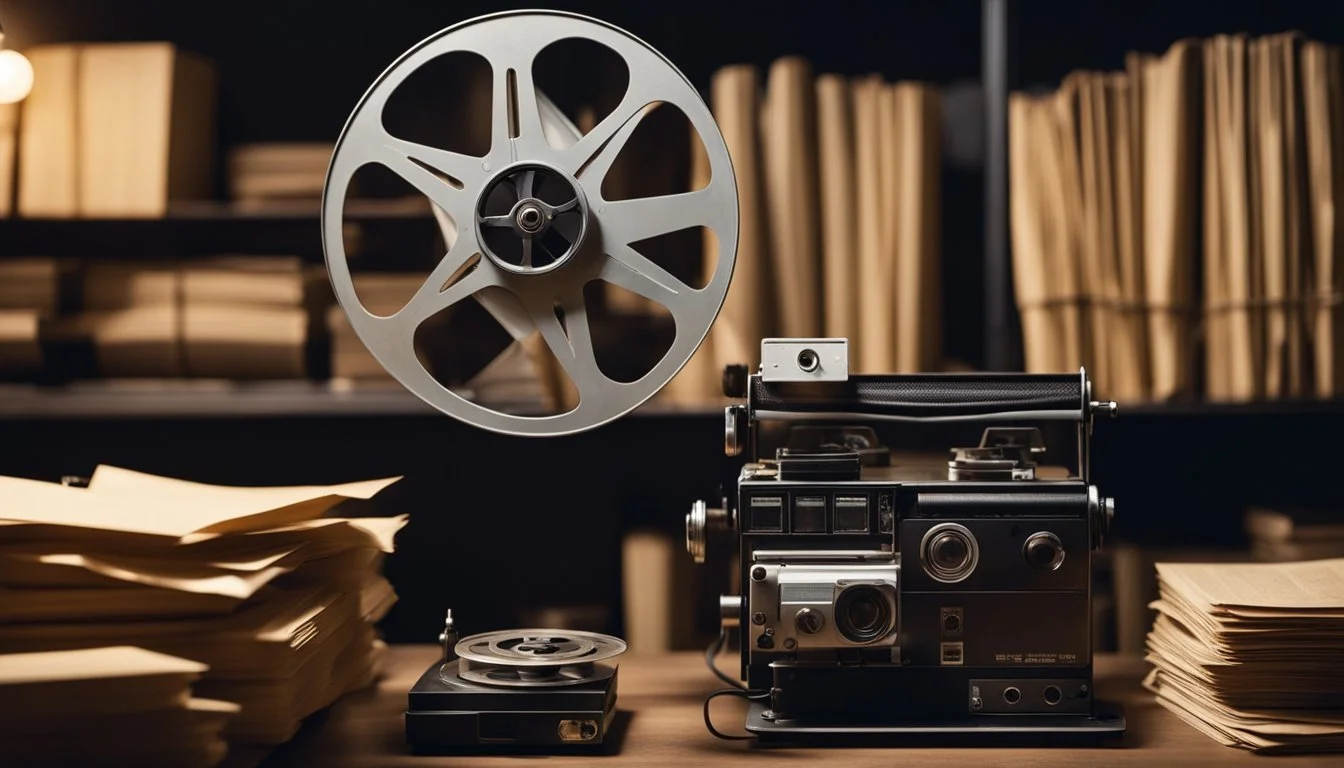Claude Lanzmann: Preserving the Memory of the Holocaust Through Film and Testimony
Claude Lanzmann, a seminal figure in the domain of documentary filmmaking, dedicated his life to preserving the memory of the Holocaust. His groundbreaking work, "Shoah," released in 1985, stands as a monumental oral history composed of nine and a half hours of testimonies from Holocaust survivors. By choosing to eschew historical footage in favor of direct survivor interviews, Lanzmann crafted a poignant and immersive narrative that continues to educate and evoke deep reflection.
Born in Paris in 1925, Lanzmann's personal experiences as a member of the French Resistance during World War II fueled his commitment to documenting the atrocities of the Holocaust. His approach in "Shoah" differed from conventional documentaries of the time, opting instead to focus on the emotional and personal recollections of those who lived through the horrors. This method not only provided invaluable historical documentation but also ensured that the voices of the survivors themselves became integral to the preservation of this dark chapter in human history.
Beyond "Shoah," Lanzmann's contributions include other significant works like "Napalm" and "Shoah: Les Quatre Sœurs," further cementing his legacy as a crucial chronicler of human experiences and historical truths. His dedication to capturing the raw and often painful narratives of Holocaust survivors has left an indelible mark on the field of documentary film, emphasizing the importance of memory in understanding and preventing the repetition of past atrocities.
The Life of Claude Lanzmann
Claude Lanzmann was born on November 27, 1925, in Paris, France. He grew up in a Jewish family during tumultuous times, which deeply influenced his later work.
Lanzmann joined the French Resistance during World War II. His commitment to fighting against oppression was evident from a young age.
He became a journalist and later transitioned into filmmaking. His journalistic background sharpened his skills in investigation and storytelling.
In 1985, Lanzmann released "Shoah," a nine-and-a-half-hour documentary about the Holocaust. This film became his most notable work, praised for its depth and the absence of historical footage.
Lanzmann continued to explore significant themes through films such as "Napalm" (2017), which recounts a personal experience in North Korea.
Significant Films:
Shoah (1985)
Napalm (2017)
Lanzmann's dedication to preserving historical memory has had a lasting impact on documentary filmmaking and Holocaust studies. His work extends beyond filmmaking; it is a vigilant reminder of the past.
Claude Lanzmann passed away on July 5, 2018, in Paris at the age of 92. His life's work remains a vital part of Holocaust education and remembrance.
This summary of his life underscores the enduring importance of his contributions to history and cinema.
Origins of 'Shoah'
Shoah, Claude Lanzmann's monumental film, delves deep into the Holocaust through extensive interviews and on-site footage. The creation journey spanned years, requiring thorough research, overcoming numerous filming challenges, and solidifying its historical relevance.
Conceptualization and Research
Lanzmann envisioned Shoah as a comprehensive exploration of the Holocaust. Rejecting archival footage, he opted for first-hand testimonies from survivors, witnesses, and former Nazis.
He conducted extensive preliminary research, engaging with historians and visiting key locations. This meticulous preparation aimed to ensure accuracy and authenticity in recounting events. His approach provided a nuanced narrative, offering a profound understanding of the Holocaust's impact on individuals and communities.
Filming Challenges
Creating Shoah was fraught with numerous obstacles. Convincing survivors to relive traumatic memories proved difficult, requiring sensitivity and perseverance.
Additionally, filming in locations like Treblinka and Auschwitz posed logistical and emotional challenges. Lanzmann's insistence on site-specific interviews added a layer of authenticity, though it intensified the complexity of the production process. His dedication to capturing honest, unfiltered testimonies resulted in a film that is both harrowing and enlightening.
Historical Significance
Shoah is not just a film; it's a vital historical document. Its emphasis on oral history preserved voices that might have otherwise been lost.
The interviews provide an unprecedented depth of insight into the Holocaust, challenging viewers to confront the human faces behind historical atrocities. The film's release sparked discussions about memory, trauma, and the ethics of representation. Its enduring significance lies in its ability to educate and provoke reflection across generations.
Other Works on the Holocaust
Claude Lanzmann's contributions to Holocaust memory extend beyond his iconic film "Shoah". He also produced other films and engaged in literature, offering detailed perspectives on this defining historical event.
Filmography
Claude Lanzmann created a series of films that delve deeply into the Holocaust, each one offering unique insights.
Shoah (1985): This nine-and-a-half-hour epic documentary is widely regarded as his masterpiece, featuring detailed testimonies from survivors and witnesses. It is distinguished by its method of oral history, using first-person narratives to convey the events.
Sobibór, October 14, 1943, 4 p.m. (2001): This documentary focuses on a revolt at the Sobibór extermination camp. It highlights the heroism and resilience of the prisoners.
The Last of the Unjust (2013): This film presents Lanzmann's 1975 conversations with Benjamin Murmelstein, the last President of the Jewish Council in Theresienstadt. It provides a profound exploration into the moral complexities of survival under Nazi persecution.
Literature Contributions
Claude Lanzmann also contributed to Holocaust studies through his written works.
The Patagonian Hare (2009): This autobiography offers insights into Lanzmann's life, including his experiences during the Holocaust and his journey in making "Shoah".
Lanzmann's articles and essays present his reflections on the filming process and the moral implications of the Holocaust, adding depth to the academic discourse on these topics.
His literary work is marked by a commitment to remembering and understanding the Holocaust, using both film and written word to keep these memories alive for future generations.
Methodology of Memory Preservation
Claude Lanzmann utilized a comprehensive approach to preserve Holocaust memories, combining distinct interview techniques, crafted narrative constructs, and a unique cinematic style. His methods ensured that voices of survivors and witnesses were documented authentically and respectfully.
Interview Techniques
Lanzmann’s interview techniques were meticulous and immersive. He often spent extensive periods with his interviewees, gaining their trust and encouraging them to share their experiences in depth. Direct and unfiltered questions were used to elicit raw, honest emotions and recollections.
Lanzmann avoided interruptions, allowing for long, uninterrupted monologues that provided a profound insight into the personal experiences of the Holocaust. This technique ensured the preservation of genuine human reactions and memories, capturing the nuances of the interviewees' expressions and emotions which are often lost in more structured interviews.
Narrative Construct
Lanzmann’s narrative construction was innovative. He broke away from traditional narrative forms, opting instead for a non-linear storytelling method. This allowed for the historical truths of the Holocaust to emerge more organically.
He intertwined individual testimonies with broader historical contexts, creating a tapestry of collective memory. Each story was given ample space to breathe and unfold, emphasizing the significance of personal accounts in understanding the enormity of the Holocaust. This method challenged viewers to actively engage with the material, piecing together the narrative from the multifaceted perspectives presented.
Cinematic Approach
Lanzmann’s cinematic approach in "Shoah" was distinct for its minimalist style. He relied heavily on extended interviews and avoided archival footage, opting instead to film contemporary landscapes where the atrocities occurred. This decision grounded the horror of the Holocaust in tangible, present-day locations, making the past palpably real for the audience.
The use of long takes and minimal editing created a sense of immediacy and intimacy. This cinematic style demanded the viewer’s attention and emotional involvement, reinforcing the permanence of the Holocaust in the collective memory. By focusing on the survivors’ voices and present-day settings, Lanzmann emphasized the enduring impact of these historical events.
Impact and Influence
Claude Lanzmann profoundly shaped educational frameworks, memorial practices, and cultural and academic discourse about the Holocaust. His work continues to influence how the Holocaust is taught and remembered globally.
Educational Frameworks
Lanzmann’s documentary "Shoah" revolutionized Holocaust education. By providing firsthand testimonies from survivors, perpetrators, and bystanders, it serves as a foundational text in classrooms worldwide.
Educational institutions integrate "Shoah" into curricula to offer students direct encounters with historical narratives. These detailed, unflinching interviews ensure that learners grasp the Holocaust’s complexities beyond statistics and textbook summaries.
Moreover, Lanzmann's insistence on meticulous historical accuracy sets a standard for educational materials, fostering critical thinking and informed discussions among students and educators alike.
Memorial Practices
Lanzmann’s influence extends to memorial practices, where his work emphasizes the importance of memory preservation. Museums and memorials often incorporate his interviews and footage to construct authentic, impactful exhibits.
For instance, the United States Holocaust Memorial Museum uses his outtakes and interviews to enhance their collections. These materials provide depth and immediacy, making visitors connect more intensely with the experiences recounted by Holocaust survivors.
Lanzmann's approach underscores the necessity of personal narratives in memorialization efforts, ensuring that the human aspect of history remains at the forefront of commemorative practices.
Cultural and Academic Discourse
In cultural and academic discourse, Lanzmann’s contributions are indispensable. His work ignites debates on representation, ethics, and the portrayal of trauma. Scholars frequently analyze "Shoah" to understand how film can convey historical truth and memory.
Lanzmann also critiqued other Holocaust representations, prompting deeper reflection on their societal impacts. His views on films like "Schindler's List" highlight concerns about dramatization potentially diluting historical accuracy.
His legacy influences not only how the Holocaust is depicted in media but also how it is critically examined, ensuring that discussions remain robust and nuanced.
Controversies and Critiques
Claude Lanzmann, though celebrated for his monumental work, Shoah, was no stranger to controversy. His intense dedication to documenting the Holocaust sparked passionate reactions from various quarters.
Some critics accused Lanzmann of being overly manipulative during interviews, suggesting that his approach to his subjects was sometimes aggressive. Filmmaker and scholar Erin McGlothlin noted that his interactions, especially with survivors and perpetrators, often veered into contentious territory.
Lanzmann's exclusion of archival footage and historical images from Shoah was another point of debate. He opted for a narrative constructed entirely from firsthand testimonies, a choice that polarized audiences and critics alike. While some praised the raw and immediate impact, others felt it disregarded a broader visual history.
The release of Lanzmann's film The Last of the Unjust, based on interviews with Benjamin Murmelstein, also drew criticism. Leslie Swift from the United States Holocaust Museum recounted how Lanzmann felt violated when the material was perceived as undermining his original work on Shoah. This reaction highlighted his uncompromising vision and the sensitive nature of his subject matter.
Additionally, Lanzmann's stern stance against Holocaust deniers and his public confrontations with them sometimes drew concern over his methods. His refusal to engage in debates with deniers was seen by some as a refusal to defend his work in a broader public sphere.
Despite these controversies, Lanzmann's commitment to documenting the Holocaust narratives remained firm. His challenging tactics and choices continue to inspire discussions on ethical practices in documentary filmmaking.
Legacy of Claude Lanzmann
Claude Lanzmann's work has a profound impact on documentary filmmaking and Holocaust remembrance.
His nine-and-a-half-hour film Shoah, released in 1985, stands as a monumental achievement. Unlike traditional documentaries, Shoah employs no historical footage. Instead, Lanzmann relies on oral testimonies from survivors, witnesses, and perpetrators.
The United States Holocaust Memorial Museum acquired the Shoah outtakes in 1996. These 185 hours of interview outtakes and 35 hours of location filming are meticulously preserved.
Lanzmann's dedication to authenticity and detail makes Shoah a critical educational tool. It is used globally in academia to teach about the Holocaust.
His influence extends beyond Shoah. His filmmaking style, prioritizing personal testimony over archival footage, has inspired future documentary makers.
In addition to Shoah, his 2017 documentary Napalm recounts a personal story from his visit to North Korea. This illustrates his diverse interests and broad talent.
Claude Lanzmann died in 2018, but his contributions leave an indelible mark. His approach reshaped how historical tragedies are documented and remembered.





